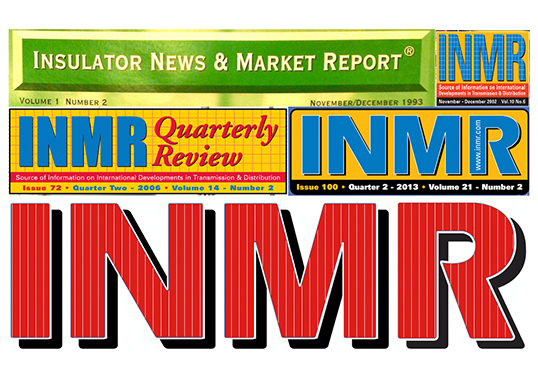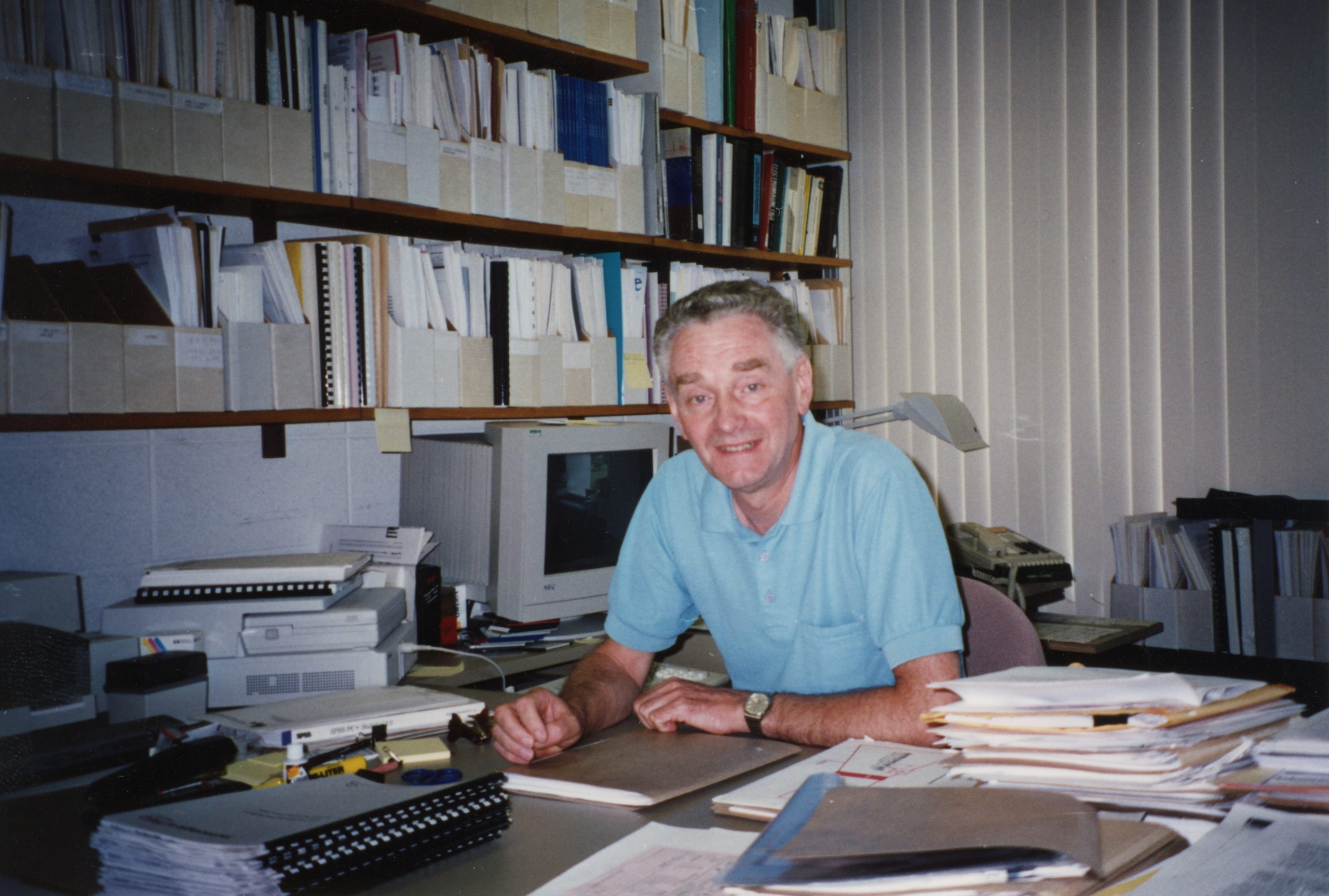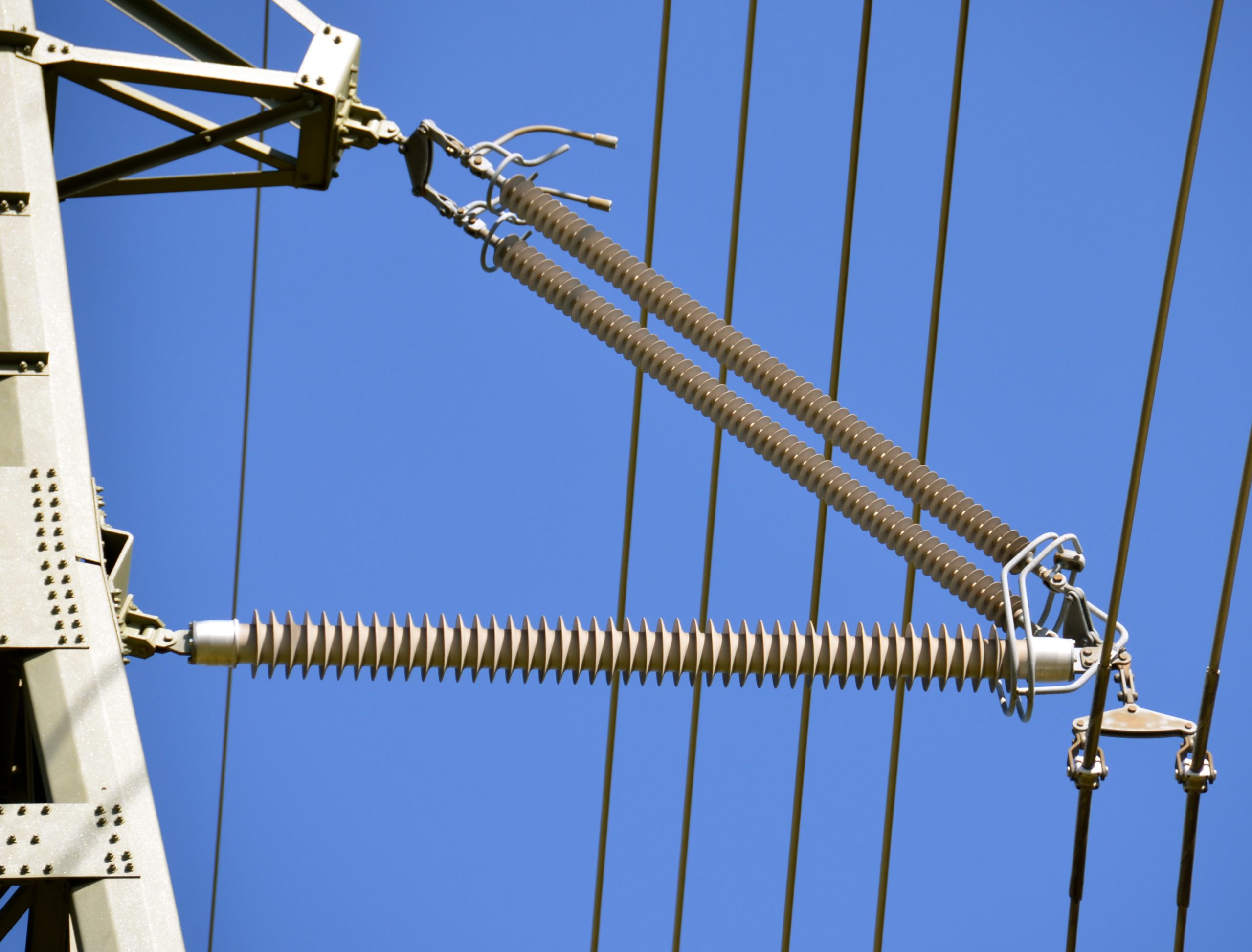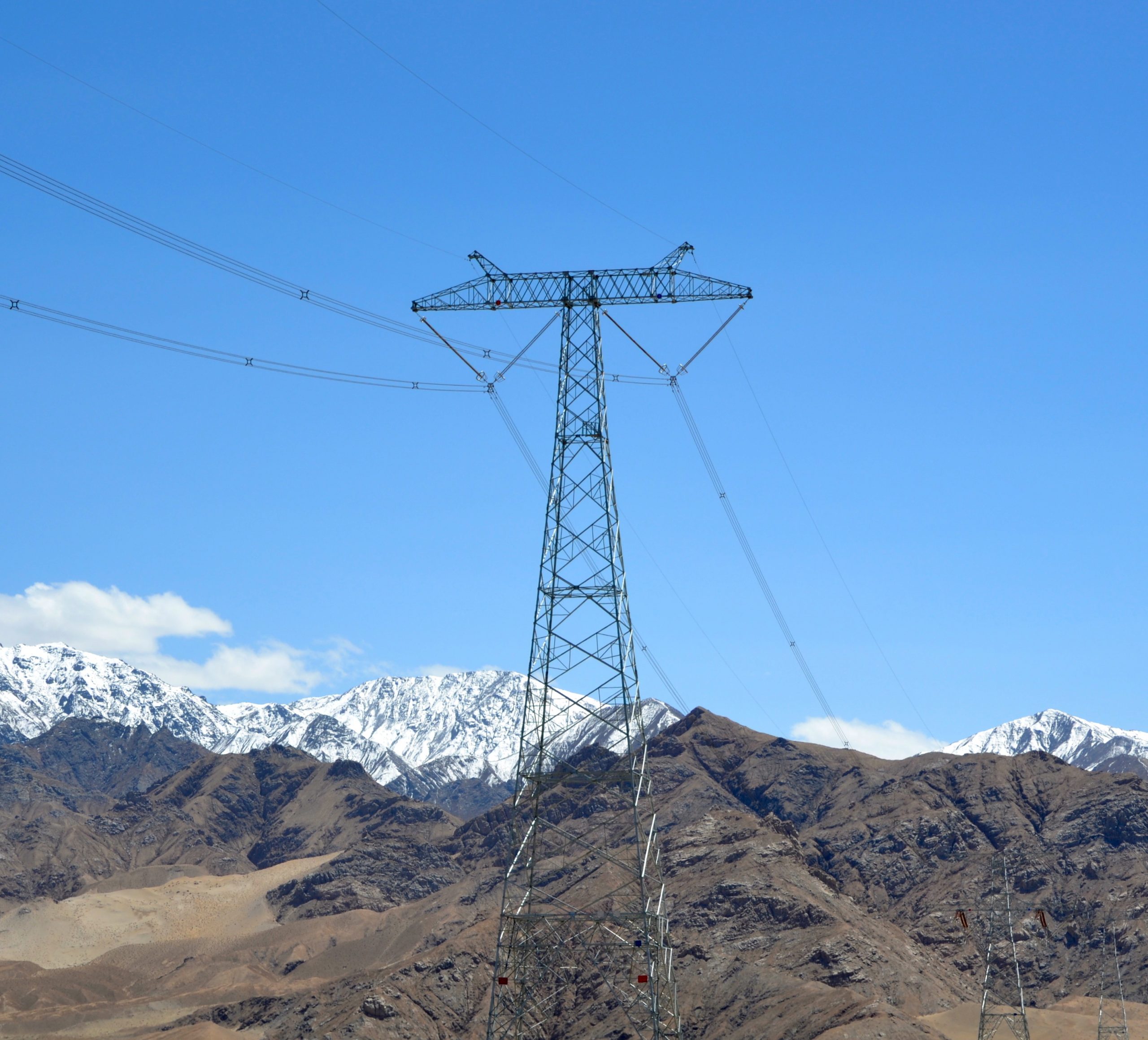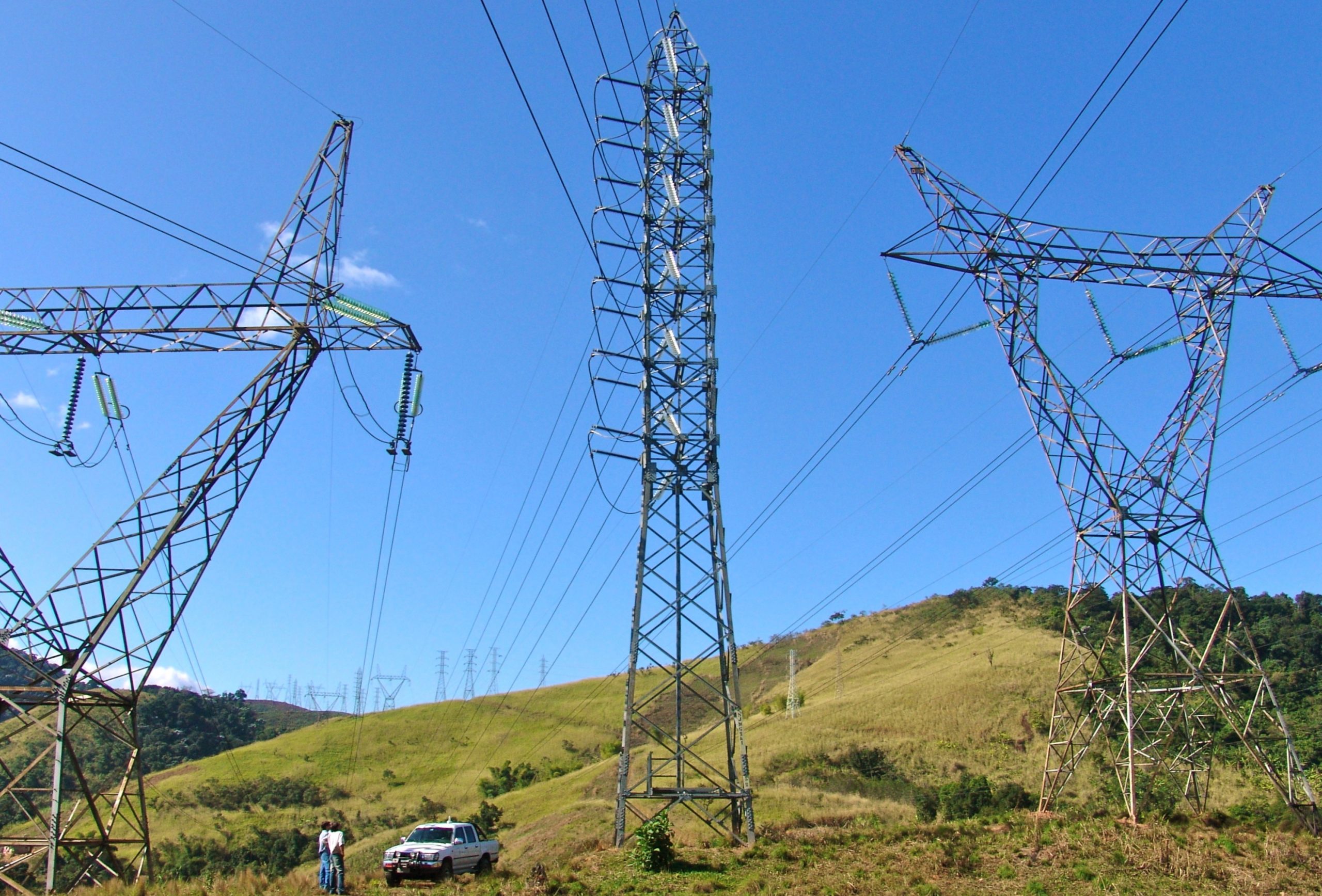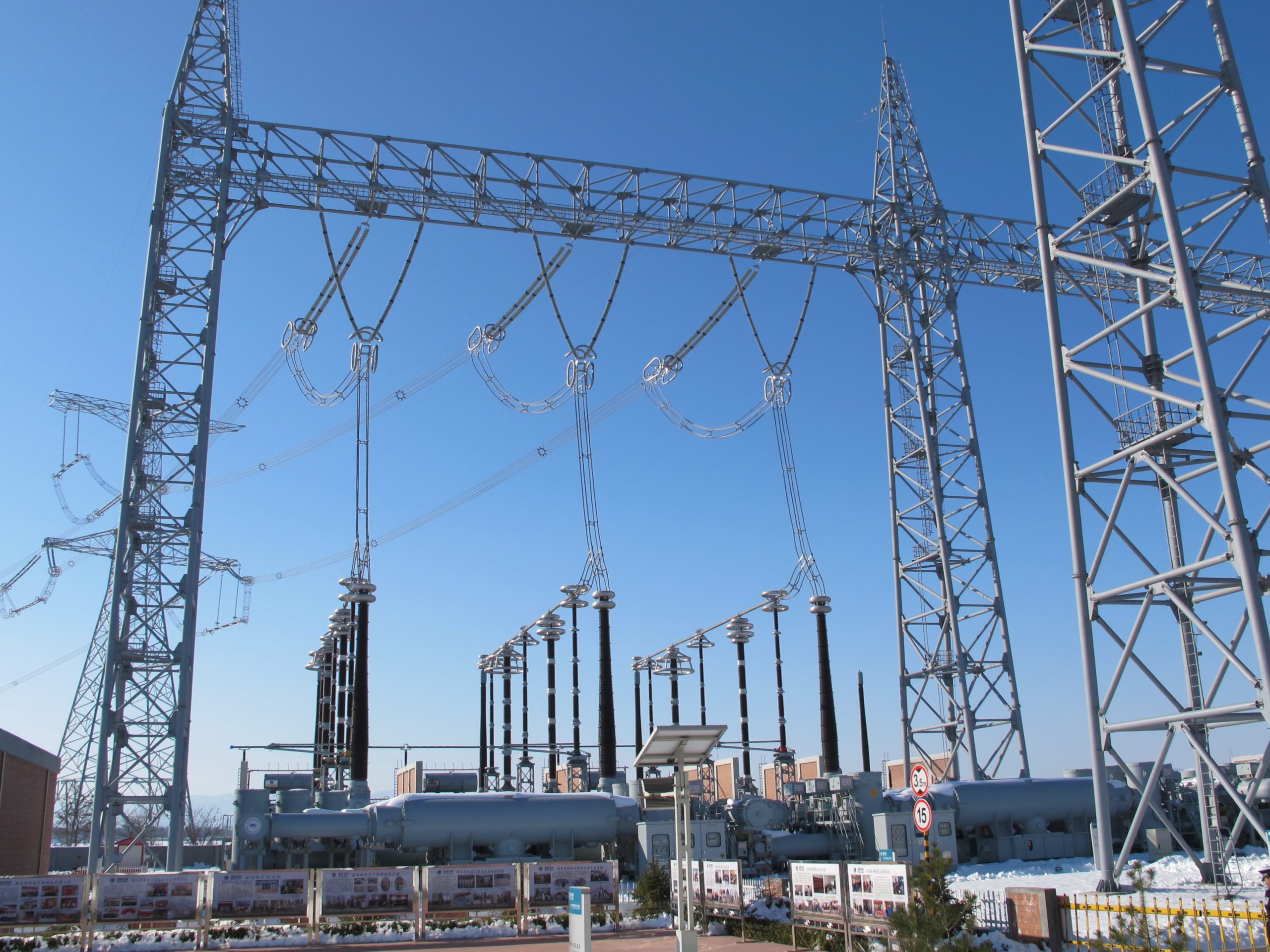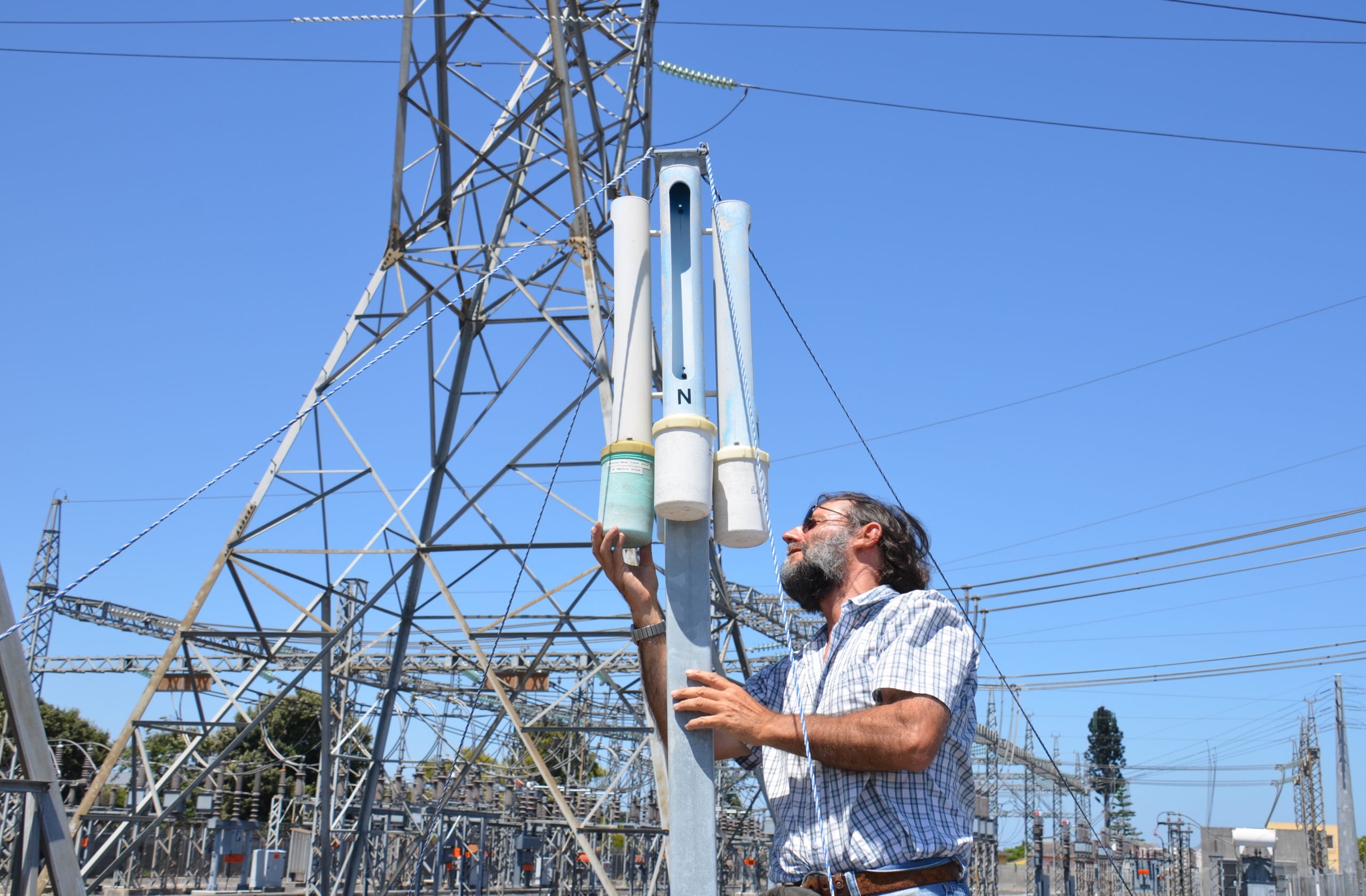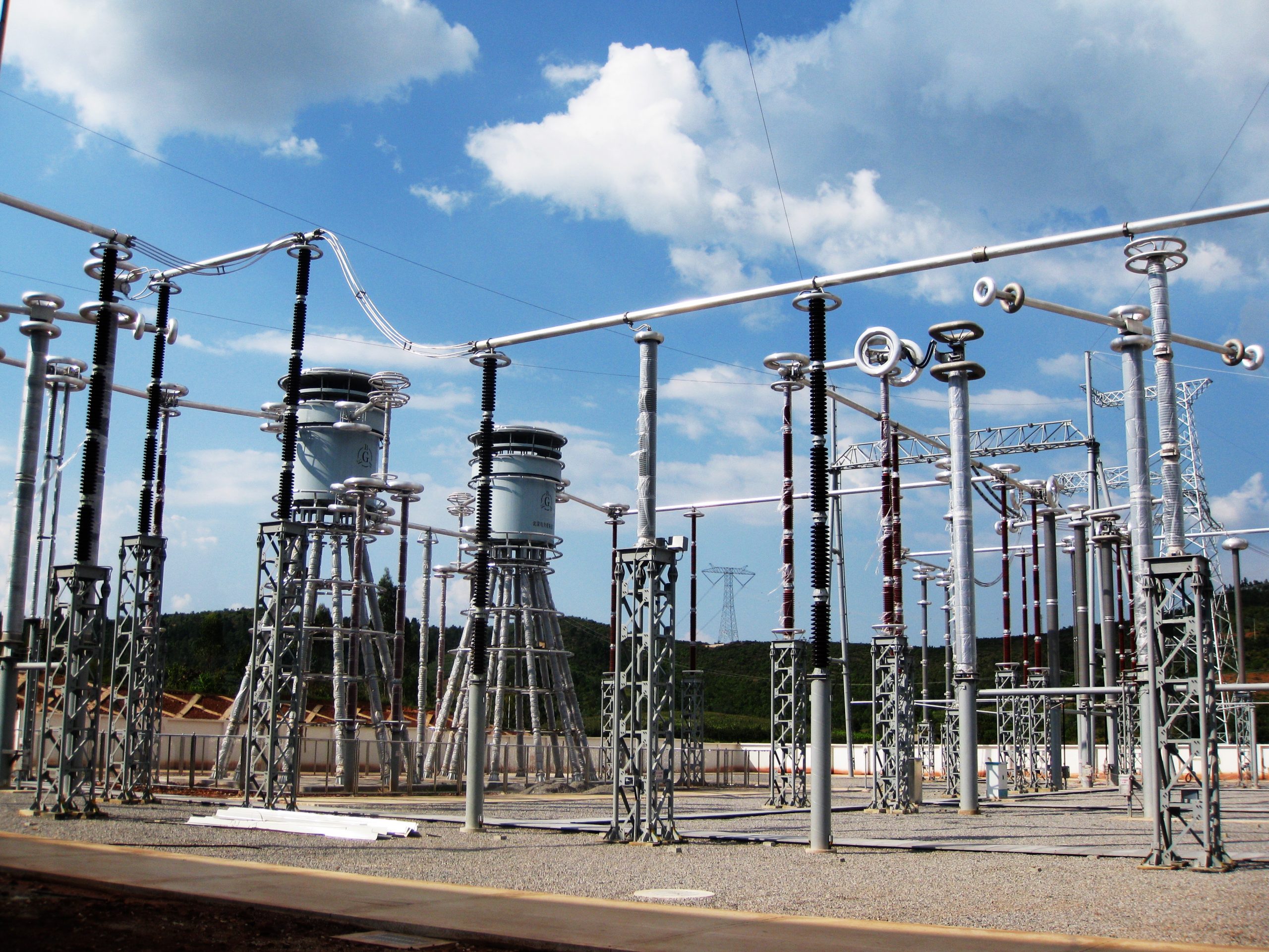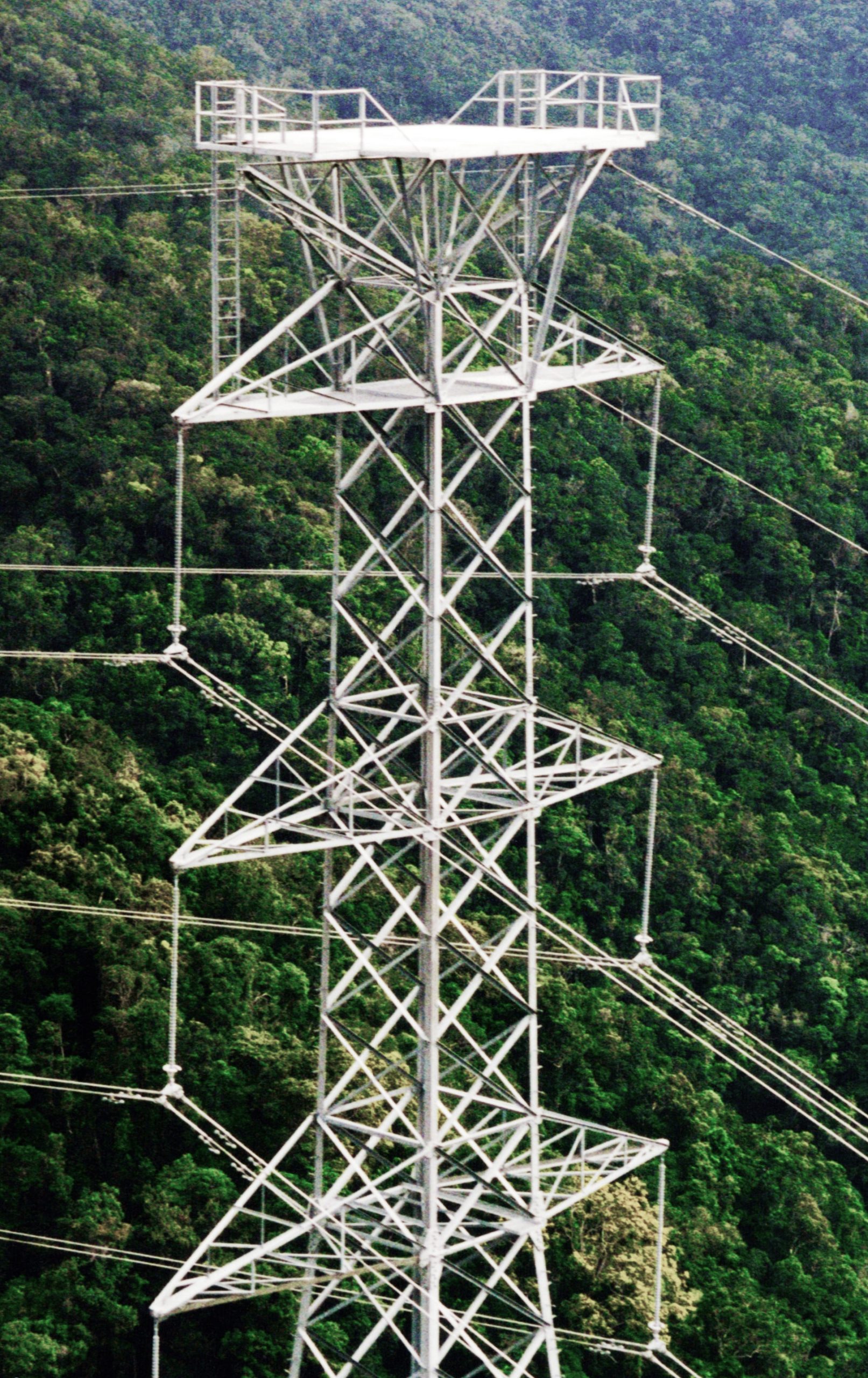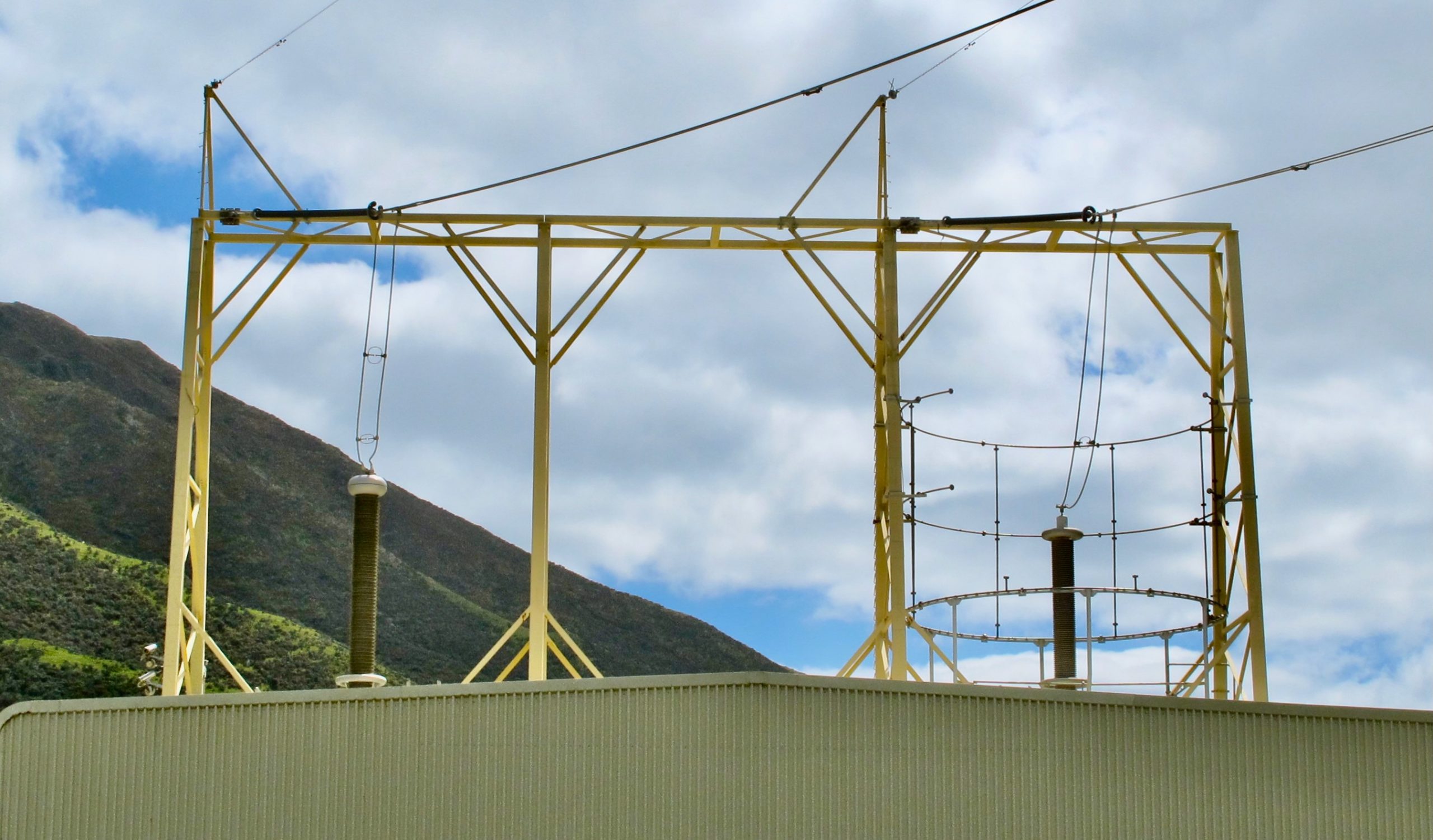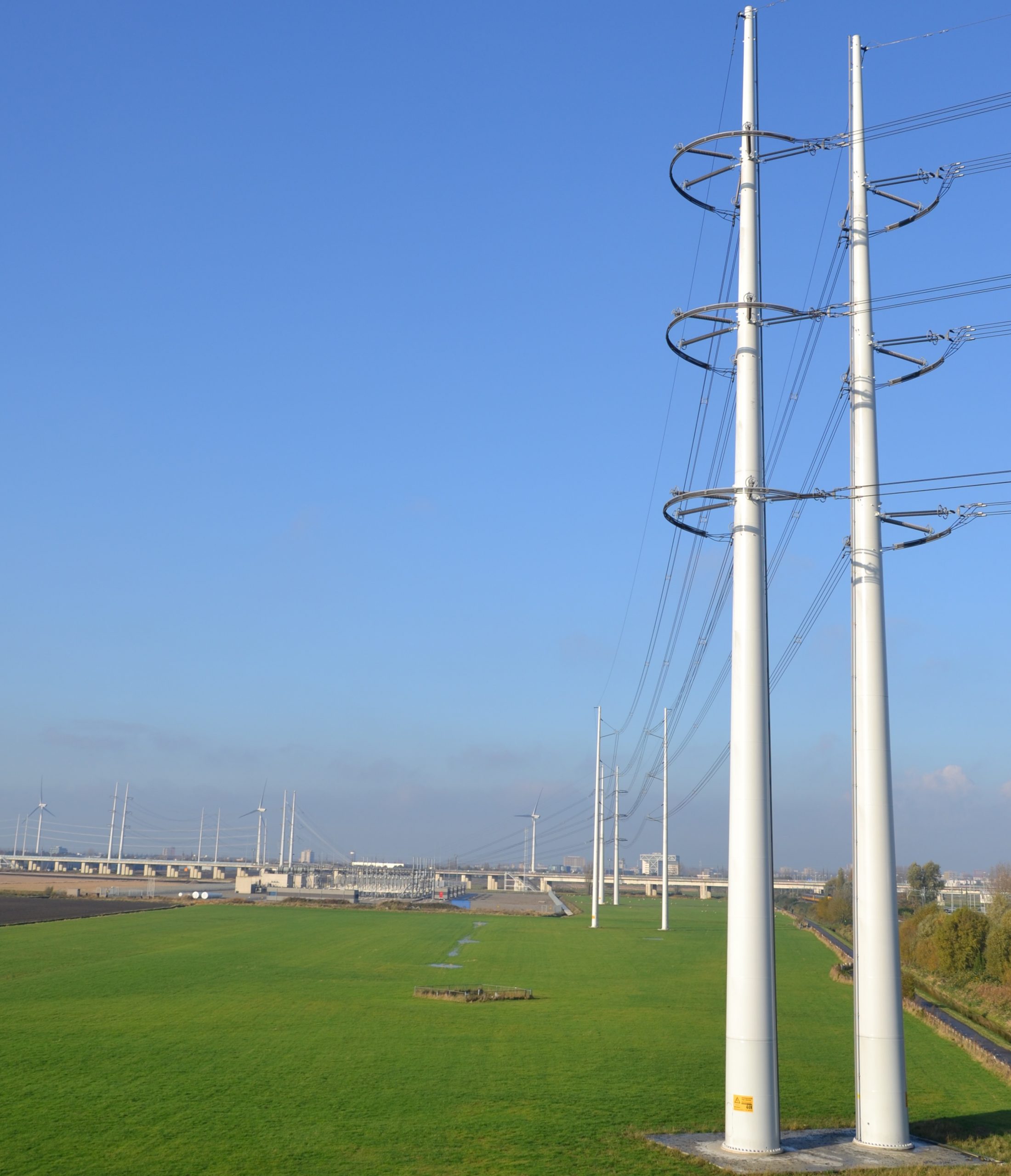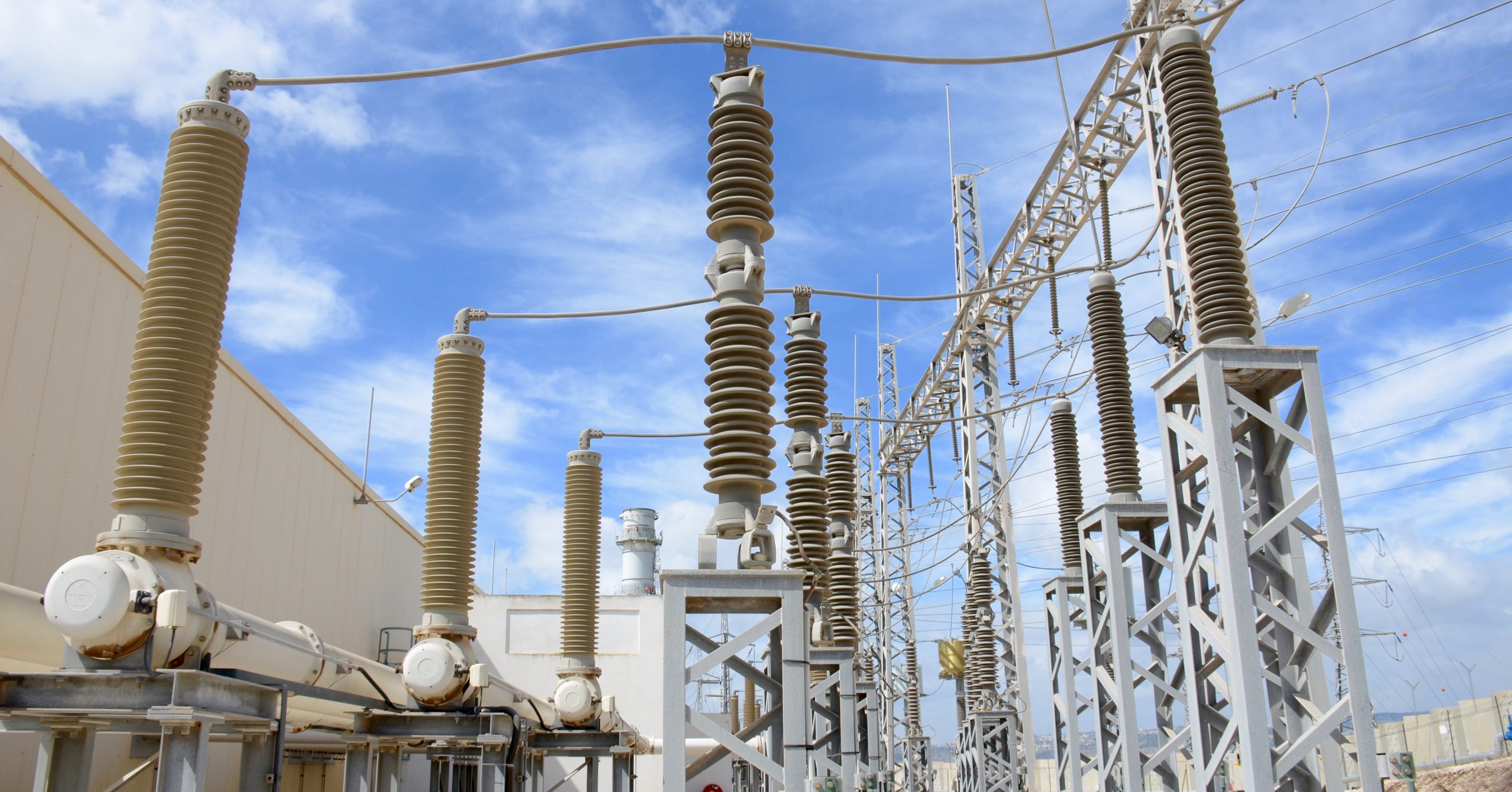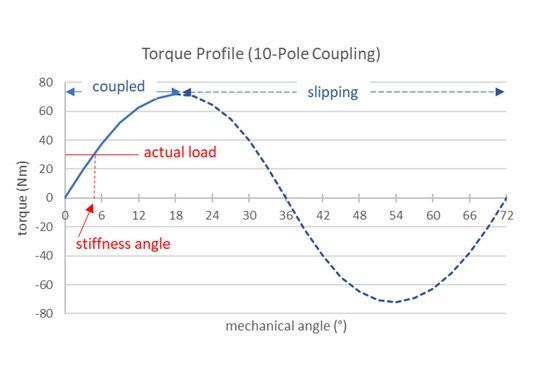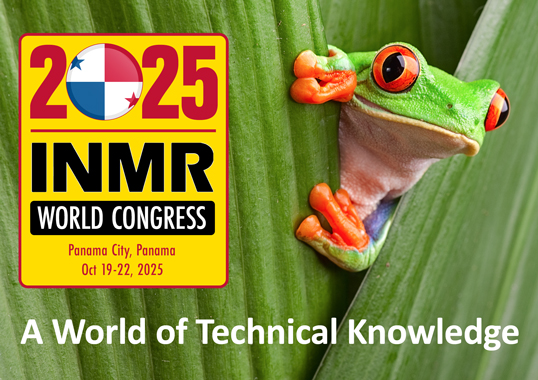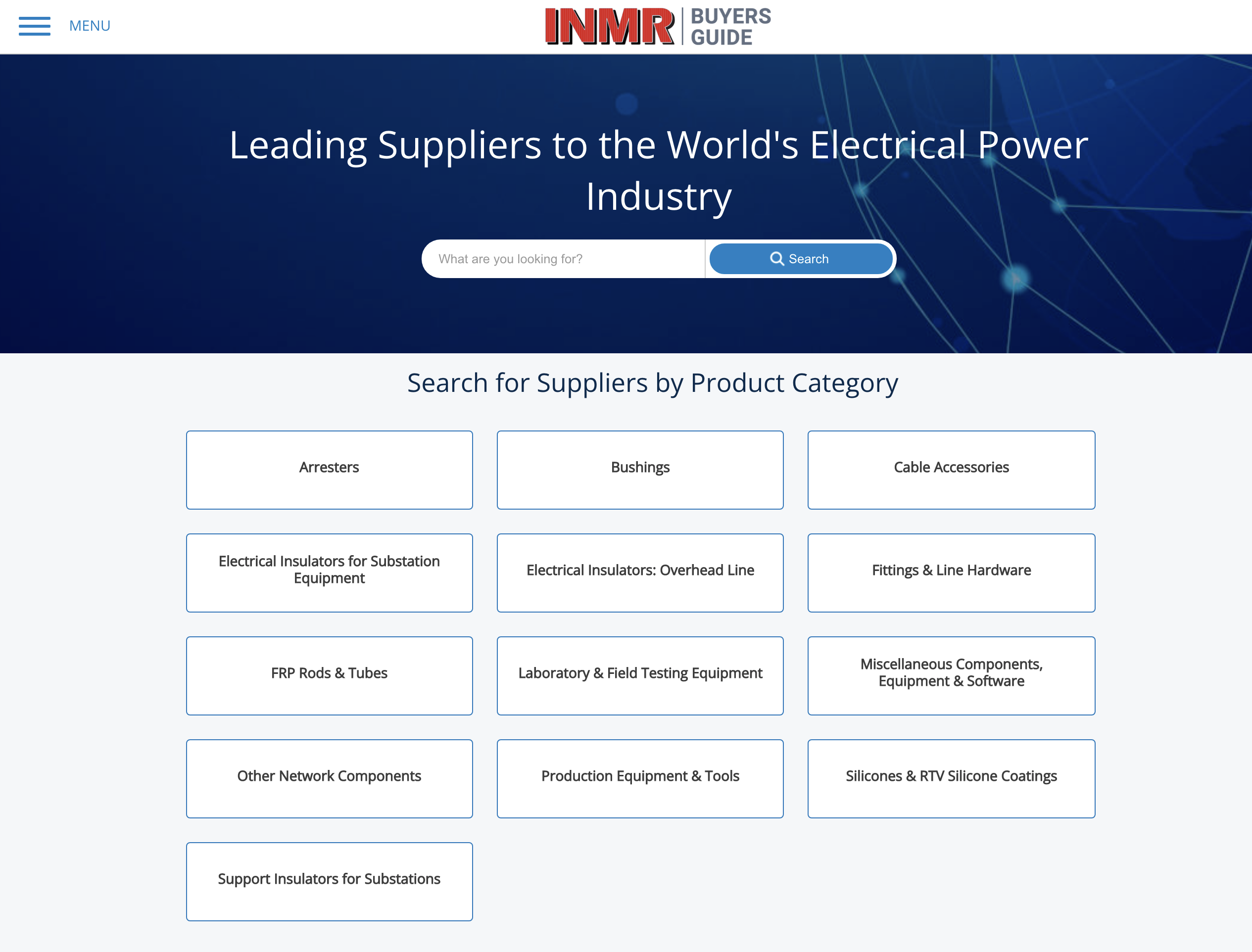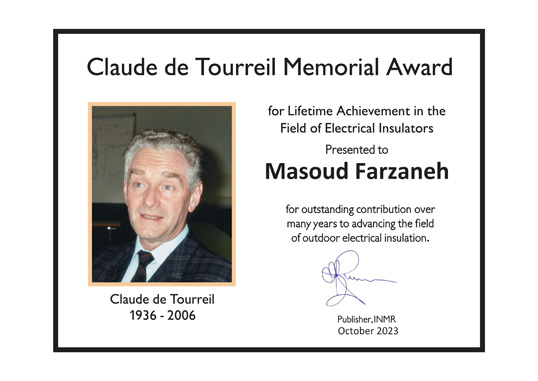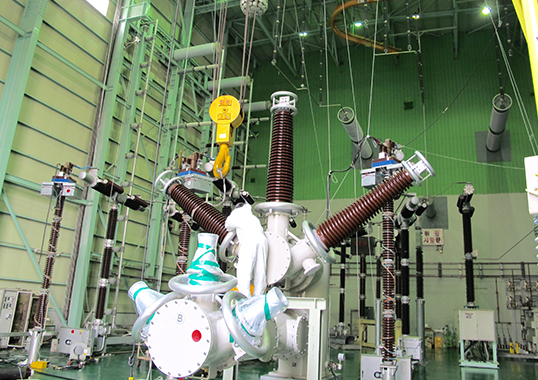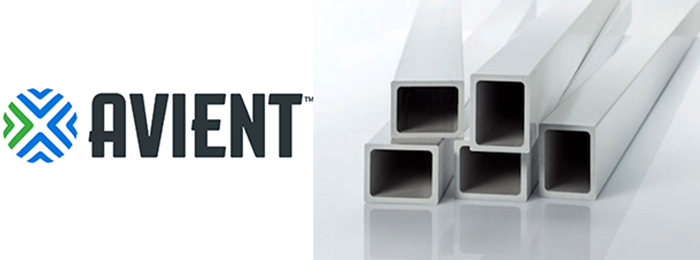Recently, more and more people have begun to ask about the origins of INMR, its name, its mission and how it began. Until now, I have resisted going into much detail when replying, thinking no one really cared or would bother to read a recounting of events.
But lately my thinking has changed.
Reviewing the origins of INMR can be helpful in two respects: firstly, it will establish the truth of how this journal began and evolved into what it has become; equally important, it is a way to thank some of the unique people who made INMR possible and without whose participation and support this journal may never have survived.
Marvin L. Zimmerman
Insulator Market Study: 1989/90
The origins of INMR go back to the late 1980s, when a large European-based producer contracted a Canadian consulting firm to carry out research on the global market for electrical insulators. The interest behind such a project lay in the recent management buyout of several European porcelain insulator factories by three Swedish entrepreneurs: Anders Bohm (a ‘sales guy’), Lennart Rundcrantz (a ‘financial guy’) and Peter Larsson (a ‘production guy’). The three wanted to quantify world market size and growth as well as to get a better understanding of this business.
It should be noted at this point that the ‘insulator world’ of the 1980s was a far different industry than what one sees today. To begin with, only two technologies battled for market share on overhead lines. About two thirds of the business was held by porcelain and one third by toughened glass. At substations, it was virtually all porcelain.
By all accounts, the insulator industry of the day was in fact a cartel with only a few manufacturers dominating all markets in developed countries and beyond. There were ‘gentlemanly’ rules about competition, which seldom revolved around price. Rather, large producers – most belonging to an exclusive industry association – decided which of them would be ‘permitted’ to dominate which markets. Moreover, tenders, no matter who won, were often shared among the several ‘competing’ suppliers. This was a comfortable world dominated by stability and predictability. There was also little incentive to invest in cost-reduction, modernized production or new technologies since market shares and factory volumes were more or less assured.
>Among the key elements allowing such an unusual type of marketplace to survive were the close, often personal relationships between producers and customers. Further supporting this structure was the fact that power supply companies at the time were publicly owned and there was strong interest to support and protect local producers, no matter what their quality and price. Protectionism was rampant and producers from far away places were disparaged or denied market access.
The three entrepreneurs who commissioned the market study had expected to learn many things. But unfortunately not what came up as one of the most important findings. From the start, it had become clear to the researchers that composite insulator technology was already ‘percolating’ and might eventually represent a real threat to this industry and its established internal order.
Marvin Zimmerman, who had founded the consultancy in 1979, was leader of the team of researchers. When he came to present the findings to a meeting of the client’s Board of Directors in 1991, he emphasized that the likely rise of a new insulator technology represented not just a looming threat for them but also an opportunity. Yet only if decisions were made to immediately develop the needed new know-how and expertise.
This finding and recommendation were not well received by the Directors, some of whom dismissed them outright. Nonetheless, personal bonds had already been forged and Anders continued to rely on Marvin to provide strategic business advice to the different factories, which were located in Sweden, France, Germany and Austria. Tragically, Lennart Rundcrantz was found murdered outside a nightclub in Vienna at about this time.
After two years working as a consultant to the company, Marvin approached Anders in 1993 and requested his permission to launch an independent periodical focusing on developments in the insulator industry. Obtaining ‘permission’ was seen as proper since a lot of what Marvin had learned about this industry was through the various projects carried out for the client.
Permission, and even strong initial support, was granted.
Why Not a Journal About Insulators?
The idea for a journal about insulators had come to Marvin in 1992 while in a theatre watching a movie. Here was an industry that seemed poised to undergo a dramatic ‘shake-up’ not only in terms of technology but also from a competitive standpoint. Monolithic electricity supply entities everywhere were being broken-up and privatized. The world was also moving toward an era of free trade. With this, the old loyalties and relationships that had supported the previous cartel mentality were beginning to dissolve.
This seemed a wonderful opportunity to report on all these developments as an objective but knowledgeable outside observer. The name chosen for the new bi-monthly publication was INSULATOR NEWS & MARKET REPORT and the inaugural issue was mailed to subscribers in September 1993.
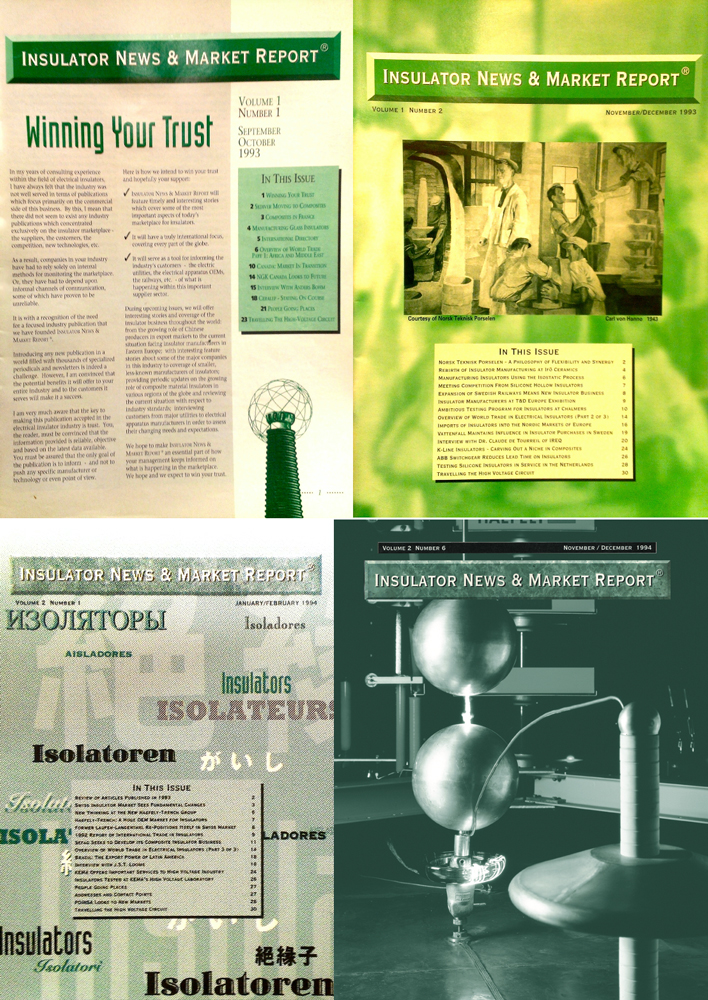
One of the first people Marvin approached to participate as a Partner in the new venture was Dr. Claude de Tourreil, whom he had interviewed in 1990 during the initial research project and who was considered one of the world’s leading authorities on insulators, especially composite type. Claude, who then worked as an expert at Hydro Quebec’s IREQ, had already become a friend and, like Marvin, he was based in Montreal. He was also Convenor of an influential CIGRE Working Group on Insulators. However, Claude declined. Like most in the industry at the time, he doubted there was sufficient interest and news to support the survival of such a journal.
Still, he agreed to be interviewed whenever asked and soon decided to also become a regular Columnist, writing an incisive Editorial, Commentary by de Tourreil, in each issue – which he did until his death in March 2006. One of Marvin’s most cherished memories is when Claude said to him in 1997: “Marvin, you proved that everything you told me could be done was right and everything I said was impossible was wrong.”
Claude is still greatly missed. But his memory and legacy of advancing knowledge on insulators live on.
Finding Solid Footing
Much of what happens in life is the result of the unplanned meeting of minds who share common purpose even though they have never met and come from much different backgrounds. Such was the case for Marvin and the new journal.
During an IEEE Conference in Chicago in 1994, Marvin was introduced to Dr. Ravi Gorur, then an Associate Professor in the Dept. of Electrical Engineering at Arizona State University. Ravi was a fervent believer in the promise of composite insulators and was already conducting research into different aspects of the technology. The idea that his research could be shared with an international audience through a journal was immediately appealing to him. He soon joined not only as Columnist with his Ravi’s Column but also contributing new technical articles in every issue.
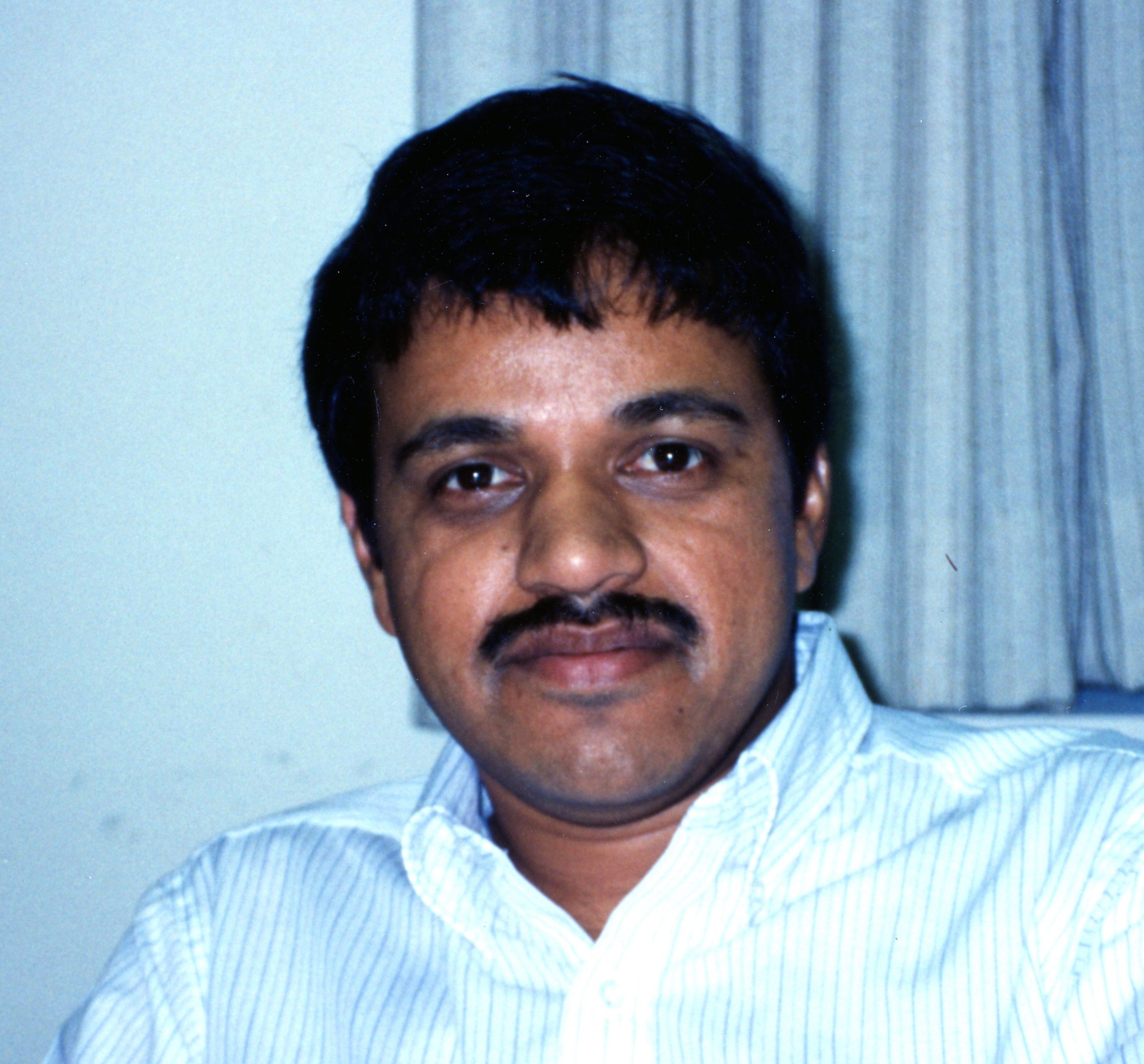
In early 1995, Ravi phoned Marvin to ask about the possibility to cooperate in promoting a seminar to educate engineers about composite insulators, which he was already doing on a small scale at his university near Phoenix. The idea resonated strongly and Marvin believed that this ‘small seminar’ idea could one day become a major international event. And so began the INMR WORLD CONGRESS, the first of which was held in Zurich in November 1995 and called the SYMPOSIUM ON NON-CERAMIC INSULATORS. This two-day conference, chaired by Ravi, had only a handful of speakers but was supported from the start by many manufacturers, all offering composite insulators or silicone and epoxy materials.
The event was such a success, that Marvin decided to hold another only 8 months later, this time in Singapore. That next conference, with Ravi again as Chair, also proved popular and marked the first to include a small tabletop exhibition alongside the conference. A third congress was therefore planned for Miami, Florida in autumn 1997, this time with a full-fledged exhibition as well. As these events increased in scale, the planning requirements grew and Marvin decided the optimal cycle should be an event held once every two years. Subsequent Congresses took place in Barcelona (1999), Shanghai (2001), Marbella (2003), Hong Kong (2005), Rio de Janeiro (2007), Crete (2009), Seoul (2011), Vancouver (2013), Munich (2015), Sitges (2017), Tucson (2019) and most recently Berlin (2022 – delayed a year by the pandemic).
Only a few years after its founding, there was already a growing ‘pushback’ to the journal coming from some of the established insulator manufacturers from within the ‘club’. One, for example, claimed that Marvin was “in the pockets of the silicone industry”. Others suggested he had embarked on a personal crusade to destroy porcelain. Instead of embracing the idea of an independent source that reported on new developments in the industry, these suppliers tried to discredit the journal. There were also attempts to boycott the journal and its events in order to drive it out of business.
Even Anders, who had already become a close friend, began to complain that the journal was unfairly highlighting the benefits of polymeric materials to the detriment of ceramic insulators. It was a challenging period for Marvin since he naturally felt loyalty to Anders and his company. But he also recognized that remaining objective and accurate in reporting were the keys to the survival of this periodical.
Fortunately, others in the T&D industry had a more balanced view. They realized that what this marketplace needed was an impartial accounting of what was really happening in service to replace the previous situation where information being circulated was dominated by rumours and even scare tactics.
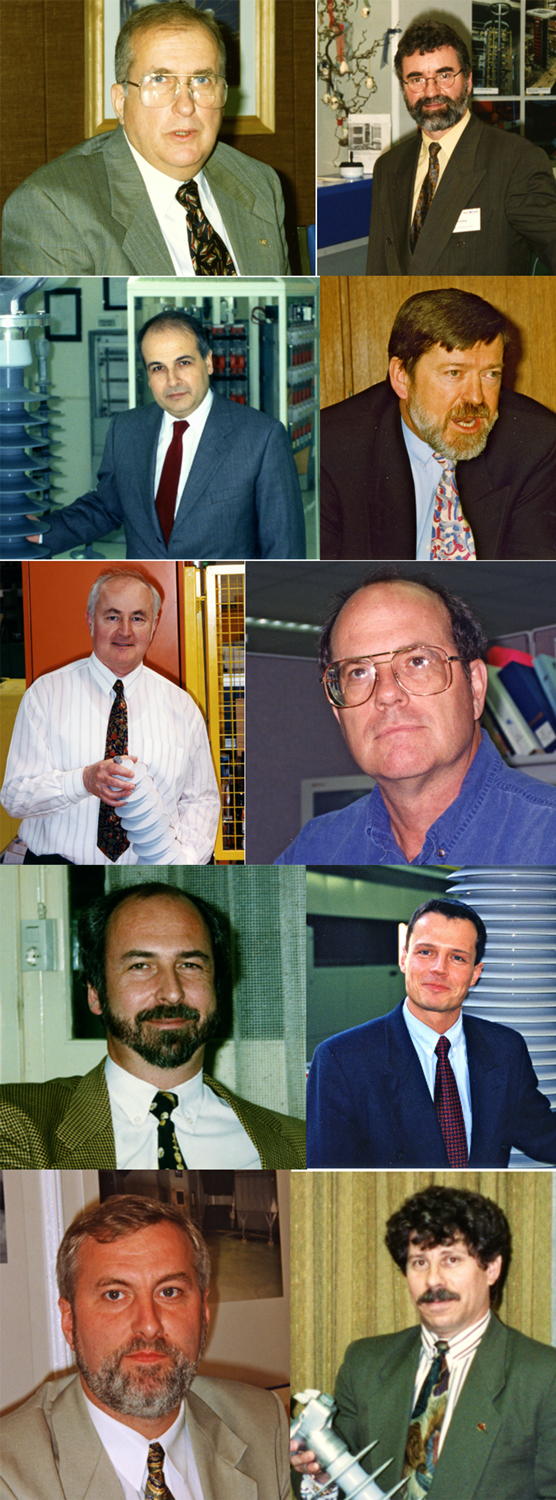
Marvin then started something that had never before been tried in any journal covering the field of electrical transmission and distribution. He organized personal visits to insulator, bushing and surge arrester factories where he interviewed staff and took photos of the entire production process. Against all expectations that suppliers would want to hide proprietary processes, most producers seemed happy to share details of how they were working to achieve consistent high quality.
INSULATOR NEWS & MARKET REPORT soon became the world’s only periodical that allowed readers to ‘visit’ factories virtually in order to better understand how the components they were purchasing were being manufactured. This same approach was applied as well to high voltage and high power laboratories, where INSULATOR NEWS & MARKET REPORT soon became the first journal to regularly visit such facilities worldwide to report on testing and standards.
As the range of stories published grew to encompass line design and inspection, substation maintenance as well as other power system components and equipment, the name INSULATOR NEWS & MARKET REPORT no longer seemed suitable. In January 1999, the journal therefore became INMR, the acronym for its original name, and which no longer suggested that the only topics being covered related to insulators.
By the way, if you believe in destiny, think about this: the chances of the same four different letters, dictated by some independent fact, being found in a person’s first name and also in their last name is next to minuscule. For example, it is doubtful that anyone reading this can find all four letters I, N, M, and R occurring in both their names. But Marvin Zimmerman could.
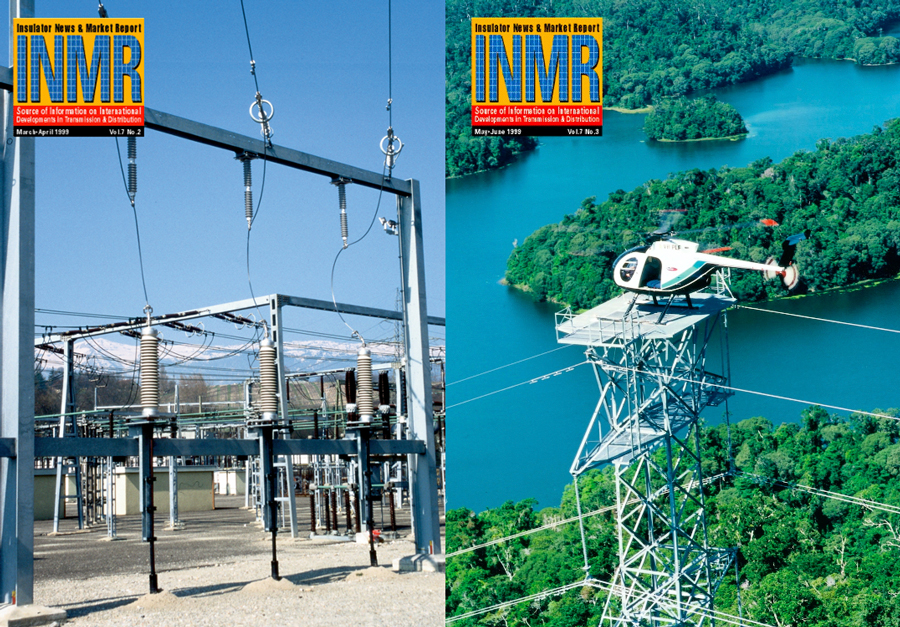
Expansion Eastwards
One of the interesting people Marvin met in the late 1990s was Tang Zhenming, who had served as Chairman of a Chinese organization grouping all government-owned porcelain insulator factories. Mr. Tang was unusually candid and expressed that one of his biggest regrets was that China had not already begun to develop its own composite insulators but instead relied on purchasing these from suppliers in Europe and the United States.
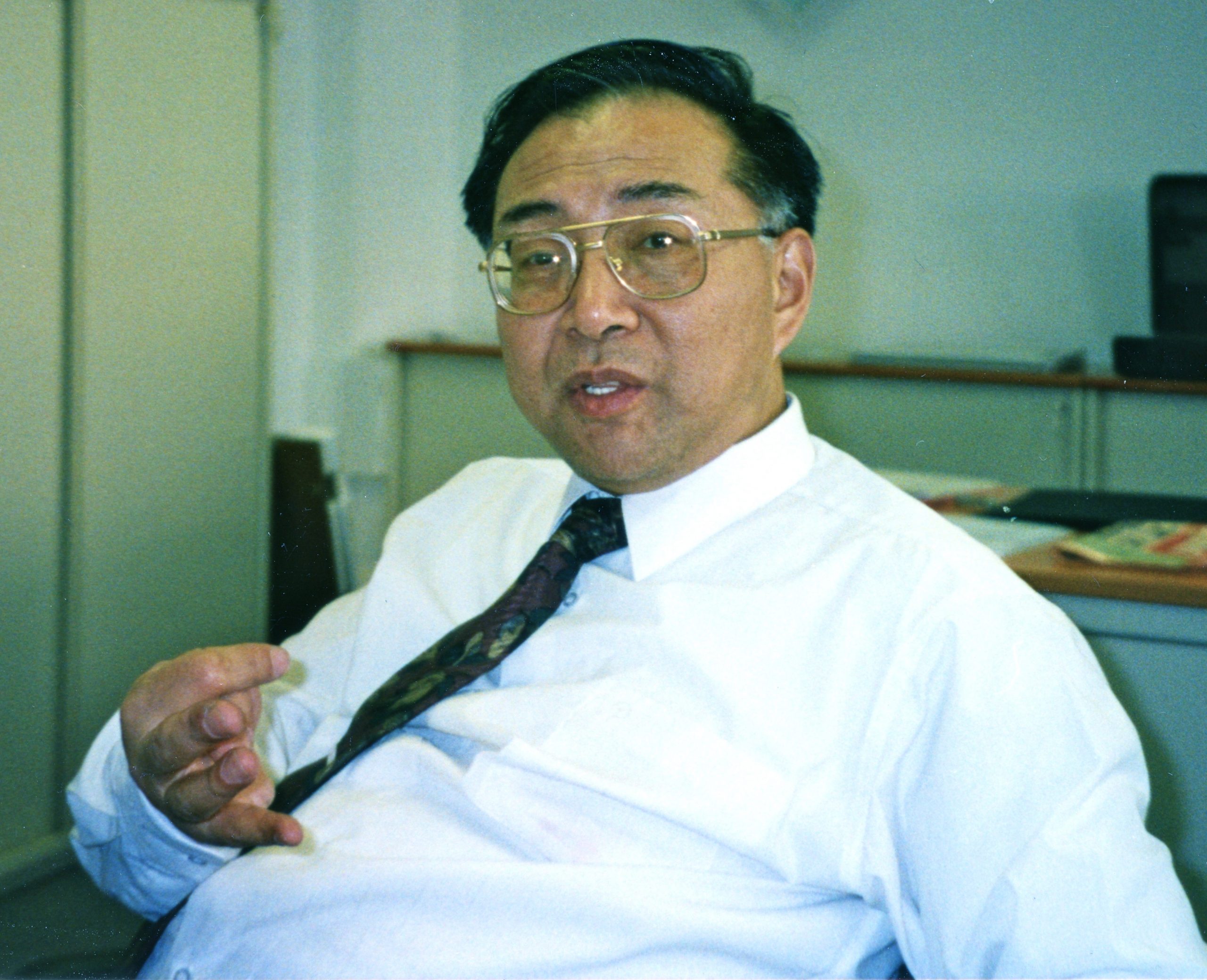
Later that year, Marvin traveled to Shenzhen to again meet Mr. Tang, who arranged visits to Chinese insulator and arrester manufacturers. The insulator industry in China, it seemed, was itself undergoing a major ‘shake-up’ by the late 1990s as large formerly government-owned factories were being sold to private interests.
One can only speculate why this process began. Perhaps one of the drivers was recognition that the state-owned factories were producing too many sub-standard products and that this would eventually impede development of the Chinese electrical grid. Possibly another factor was the expectation that private control would make local industry more competitive, in the process helping drive up quality and productivity.
It is a point of interest that the local entrepreneurs who purchased these huge factories, usually located in or near city centers, did very well. In no time, the land had become even more valuable than the business. In fact, many of the old factories soon transformed into high-rise urban neighbourhoods, while insulator production was relocated to brand new factories, outfitted with all new equipment – something that was not taking place in Europe or in the Americas.
In 2000, Marvin traveled with Claude to Beijing where he was introduced to Professors Liang Xidong and Guan Zhicheng, Chinese experts on composite insulators who were conducting research in the Dept. of Electrical Engineering at Tsinghua University. Marvin had already decided to hold the 2001 INMR WORLD CONGRESS in Shanghai and these new university contacts along with senior staff at China EPRI helped ensure strong local participation.
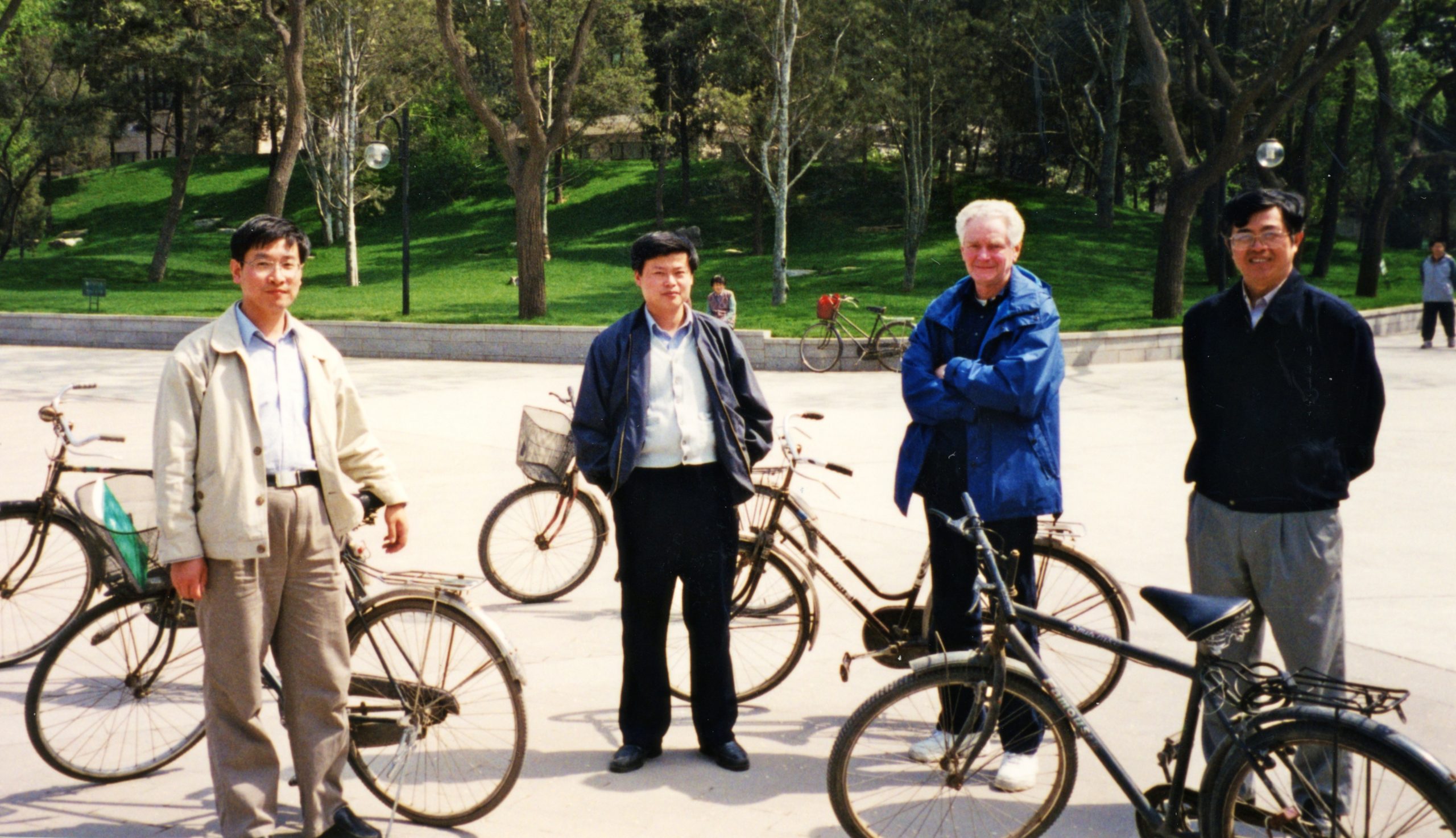
Shortly thereafter, Prof. Liang was invited to contribute a column to INMR called Scene from China, where he reported on developments in the rapidly expanding Chinese power system. When his duties changed to administration in 2011, Prof. Guan took over the column. Over the next 20 years, Chinese production and expertise in insulators began to mushroom as did the country’s T&D technology in general. The unprecedented expansion of China’s power grid and to the highest voltage levels, soon itself became a dominant story on the world scene and INMR had become well positioned to report on these achievements.
‘Putting In the Kilometers’
The word ‘journal’ has same origin as the word ‘journey’. There is the clear implication that the people who produce a journal must be prepared to ‘put in the kilometers’ – go into the field to best report on what is taking place. Unfortunately, this linkage seems to have been discarded over time. Most periodicals these days no longer conduct field visits to gather first-hand knowledge on what they are writing about.
From the start in 1993, Marvin relied on an approach that had served him well over years as a management consultant: Ask the right questions of the right people and pay attention to the answers. INSULATOR NEWS & MARKET REPORT thus developed a style that could be termed ‘investigative journalism’, identifying interesting stories taking place across the globe and then putting in the kilometers (and the hotel nights) to report firsthand on them. The journal’s editorial content also soon expanded beyond the factories and test laboratories to include visits to overhead line projects and substations where developments of interest were taking place. This type of ‘on-the-spot’, real-time reporting was unique and soon distinguished it from other periodicals serving the T&D sector.
For example, in the mid 1990s, Marvin visited Los Angeles and then Phoenix, Arizona to report on the world’s first 500 kV overhead lines entirely equipped with silicone insulators. He interviewed the Managers for both the Mead-Adelanto and the Mead-Phoenix Projects and later accompanied them into the desert to photograph the new lines. Selection of composite insulators for such important transmission lines may not seem extraordinary these days but at the time it was nothing short of revolutionary.
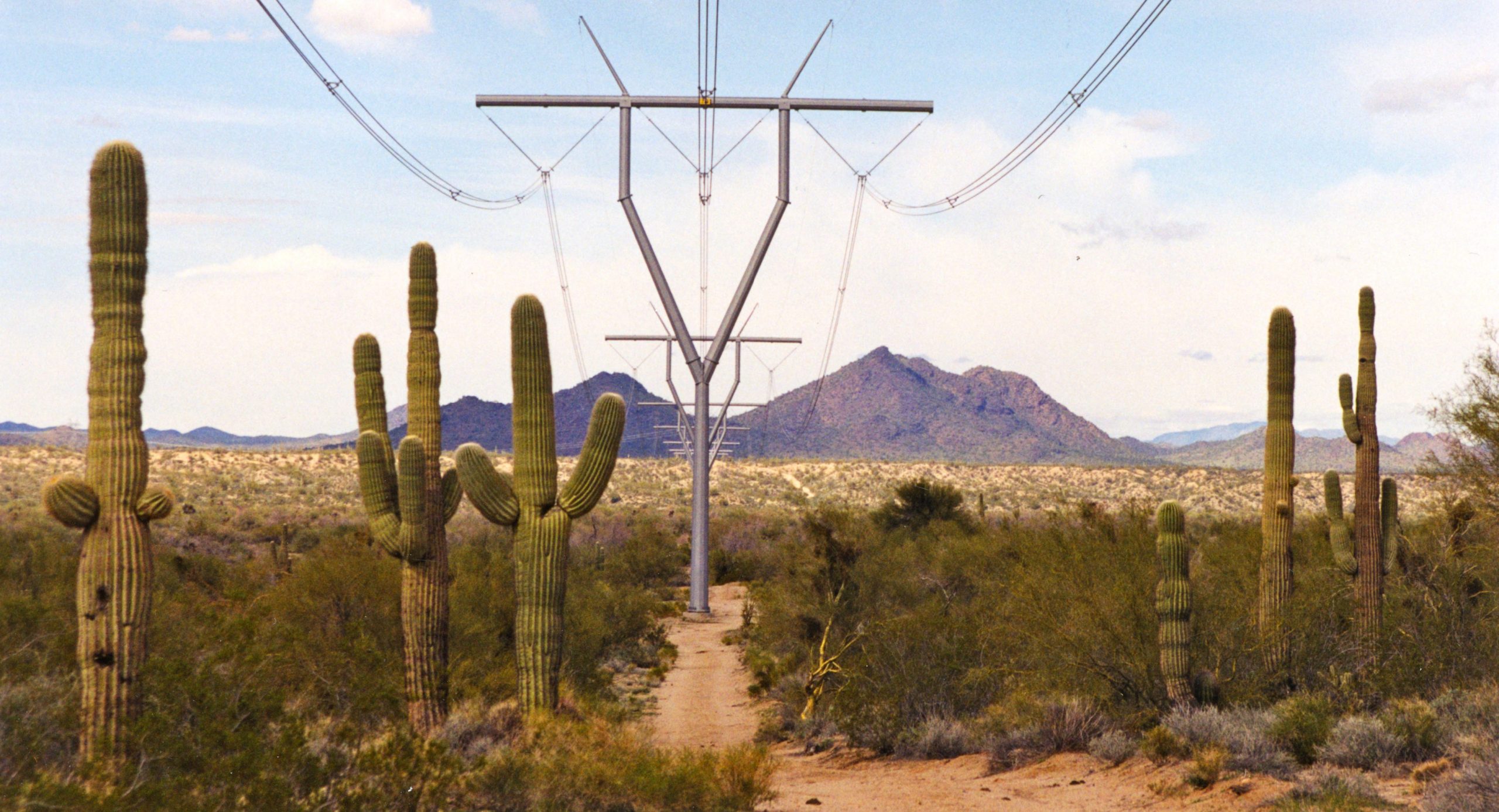
Shortly thereafter, INSULATOR NEWS & MARKET REPORT traveled to Switzerland, to report on the explosion of an old porcelain-housed breaker that crippled a major 400 kV substation and blacked out the entire city of Geneva.
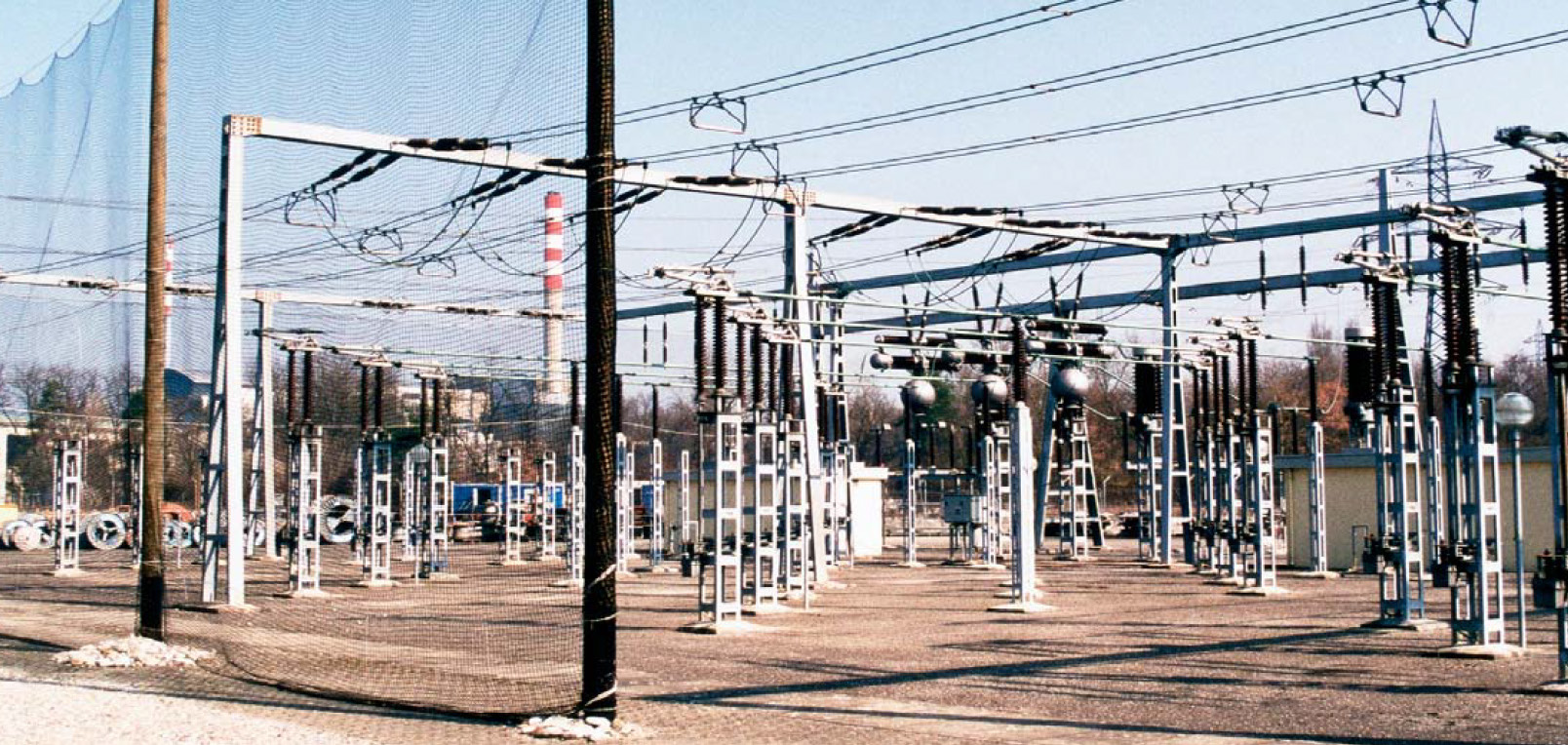
There was also a visit to the world’s first compact 400 kV line in the company of Dr. Konstantin Papailiou, then Managing Director at a Swiss manufacturer of the insulators used for this ground-breaking project.
Over subsequent years, INMR maintained this same basic approach of reporting firsthand on hundreds of projects as well as on unique problems encountered during service, such as:
• World’s highest HVDC line, traversing altitudes up to 4500 m on its route from Qinghai to Tibet;
• First compact line in Brazil, insulated using polymeric post insulators and glass tension strings;
• 1000 kV line and substation at Jingmen;
• Monitoring pollution levels at substations across Cape Province of South Africa;
• One of the first 800 kV HVDC substations, located in Yunnan, China;
• Unique 275 kV line running through sensitive rainforests in northeastern Australia where the only access for maintenance is by helicopter;
• Two of the world’s most critical bushings, that connect the North and South Islands of New Zealand at a heavily polluted cable termination station near Wellington;
• A totally new tower and design concept developed by KEMA and TenneT in the Netherlands;
• Substation in Israel where composite bushings were given RTV silicone coatings to combat heavy pollution from nearby cooling towers;
• Aesthetic 400 kV tower design in Denmark;
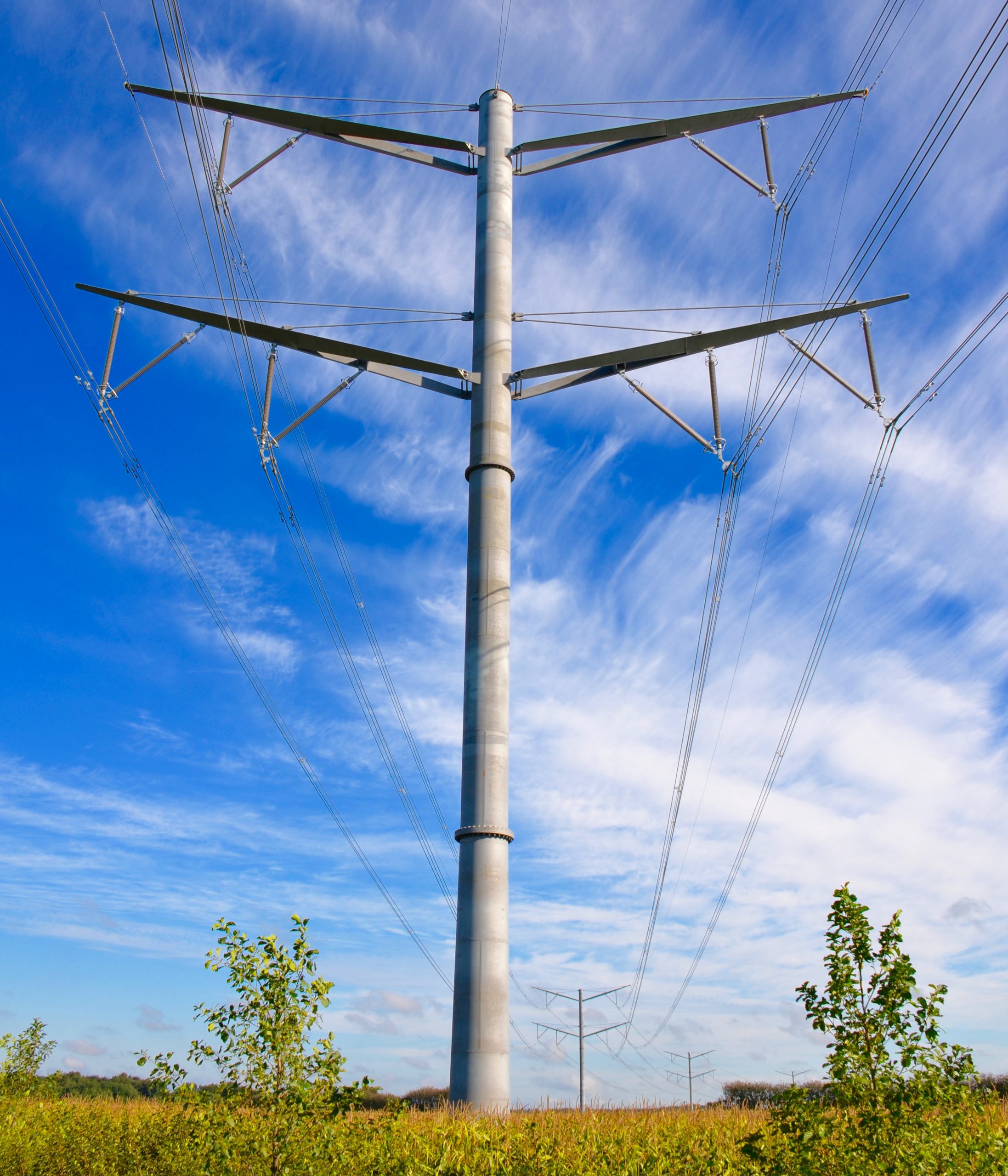 INMR’s editorial approach, based on firsthand interviews with the people involved soon began to ‘transport’ readers to faraway places. Wherever there was something new or noteworthy in the T&D sector, INMR was there to ‘chase the story’ and report on it. Over 30 years, Marvin visited over 50 countries on all continents, sometimes even sleeping at substations when there was no hotel nearby.
INMR’s editorial approach, based on firsthand interviews with the people involved soon began to ‘transport’ readers to faraway places. Wherever there was something new or noteworthy in the T&D sector, INMR was there to ‘chase the story’ and report on it. Over 30 years, Marvin visited over 50 countries on all continents, sometimes even sleeping at substations when there was no hotel nearby.
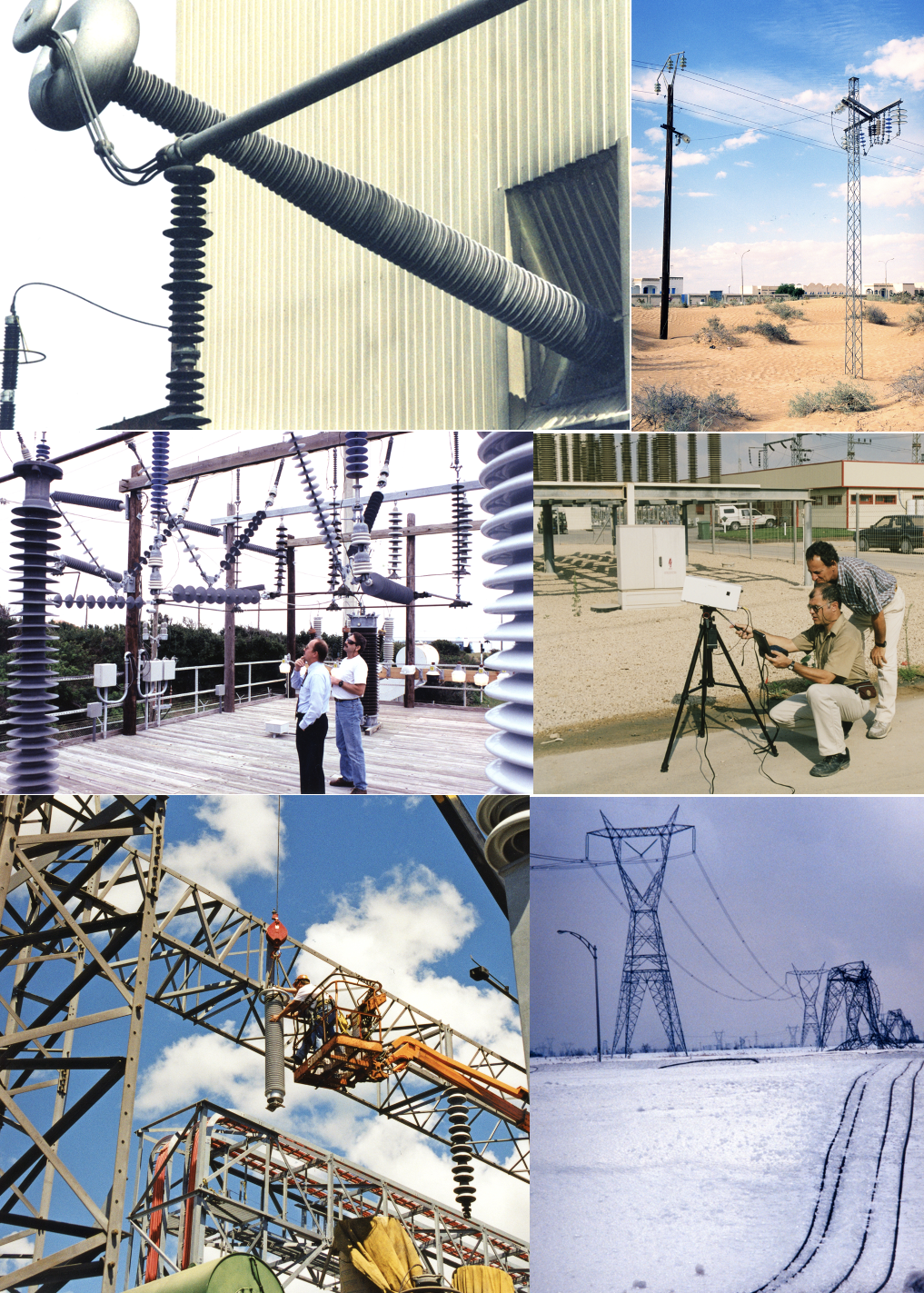
INMR became an amalgam of an engineering journal, a business journal and a travel journal.
INSULATOR NEWS & MARKET REPORT also had the opportunity to meet and interview key opinion leaders in the field of electrical insulation, such as: the late John Looms, who wrote one of the most influential books on the topic; the late Prof. Hermann Kärner, who conducted key research on composite materials at the Technical University of Braunschweig and who educated a generation of young German engineers; Igor Gutman, an expert researcher, then at STRI and now with Independent Insulation Group; Wallace Vosloo, now retired from Eskom and a contributor of innovative and even brilliant material; and Raouf Znaidi, formerly with STEG, who developed into a respected INMR journalist, reporting on T&D developments across the Middle East, North Africa Turkey and Pakistan.
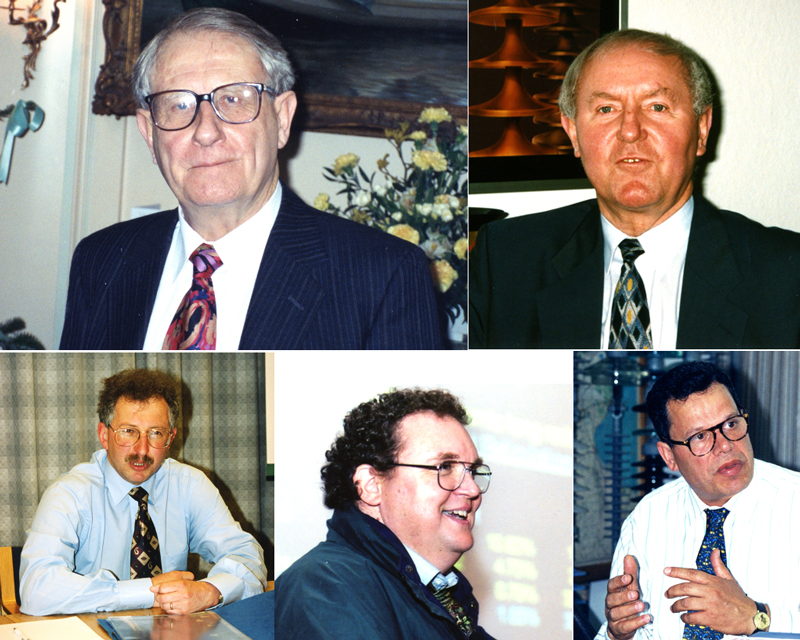
Some experts were invited to become regular contributors in each successive issue, including: Prof. Stanislaw Gubanski of Chalmers University of Technology who for years contributed his insightful column, From the Research View; Dr. William Chisholm, formerly of Ontario Hydro Technologies, whose Transient Thoughts column not only informed but also entertained readers with its unique style; Alberto Pigini, formerly with CESI, whose broad experience and in-depth T&D knowledge was communicated to readers in each Commentary by Pigini; Jonathan Woodworth, formerly with Cooper Power Systems, who for years contributed numerous technical articles about surge arresters as well as the highly valued column, Woodworth on Arresters; Prof. Klaus-Dieter Haim of Zittau-Görlitz University of Applied Sciences who offered expertise on cables in his informative column, Focus on Cable Accessories; and Dr. Frank Schmuck who reviewed developments in the Working Group on Insulators in his long-time column, Reporting from CIGRE.
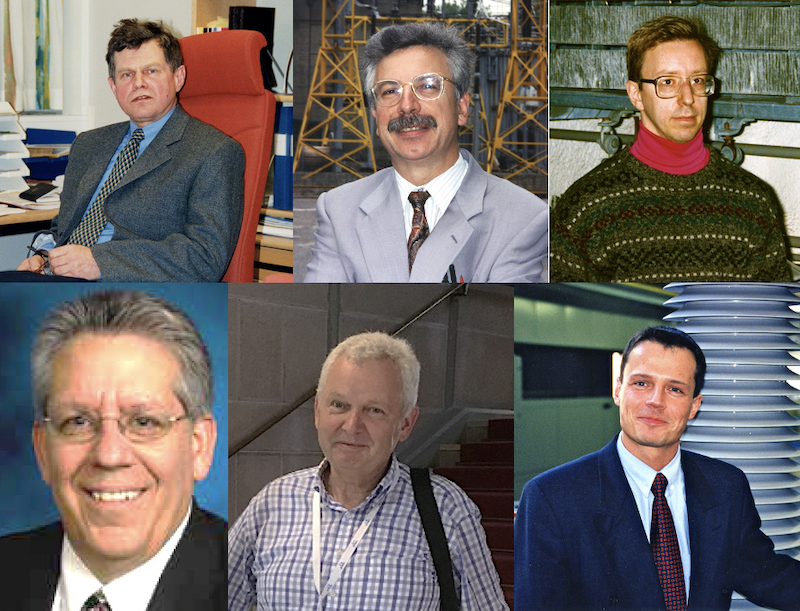
By 2011, INMR’s growing coverage of developments across the rapidly expanding and vast Chinese power grid saw visits to lines, substations and factories across almost every province in that country. This unique view into the local industry prompted a decision to also offer the journal in Chinese – an idea proposed to Marvin by Prof. Zhang Desai of Wuhan University. Prof. Zhang then co-operated for years, dutifully helping to translate selected INMR content into material for INMR China, with its thousands of readers across the Chinese power industry.
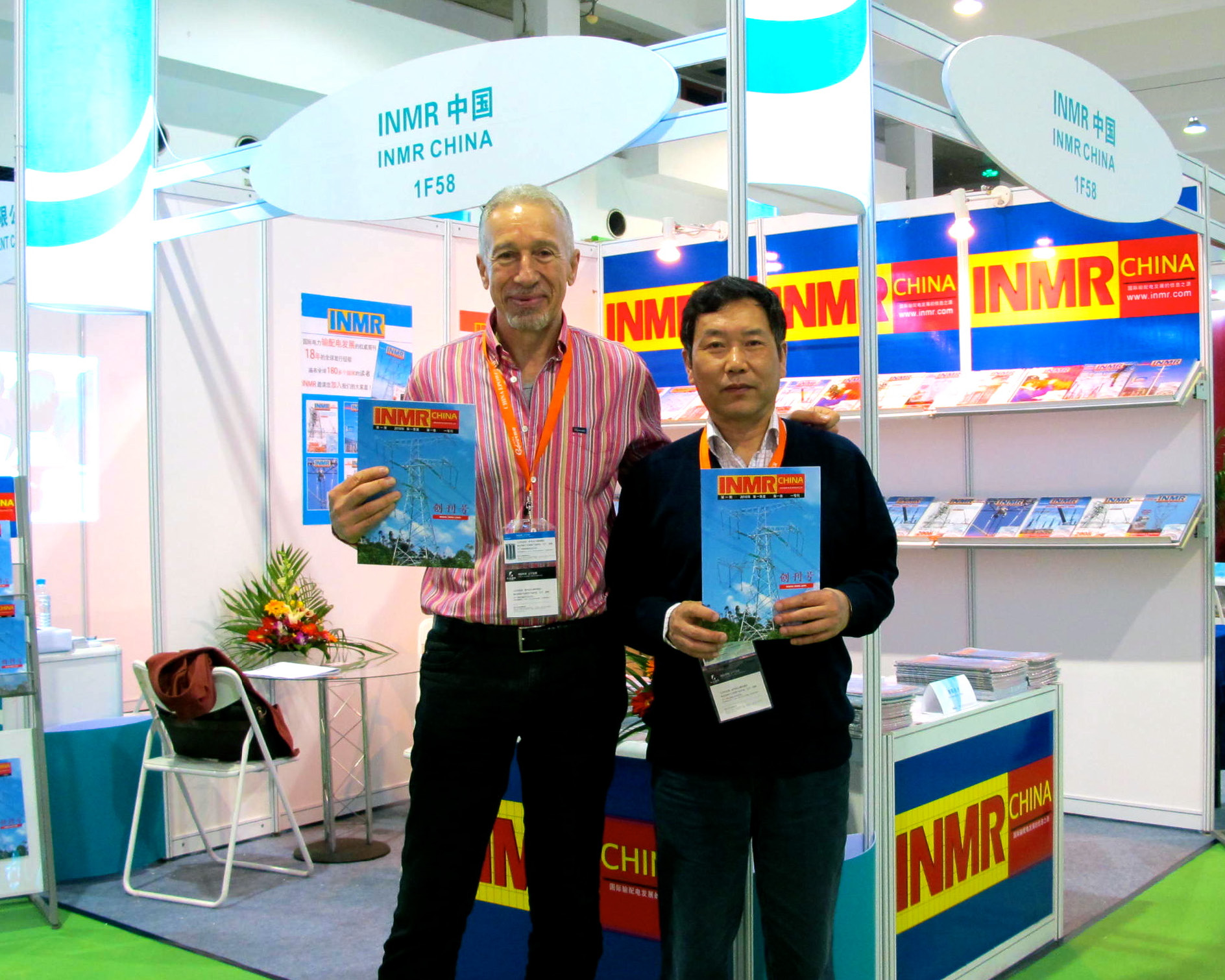
www.INMR.com
In 2018, 25 years after its founding and after publishing 118 issues, INMR became entirely digital. This was not an easy decision since the printed quarterly journal had by then attained widespread popularity due to its high-quality paper stock and pages filled with detailed and descriptive photos of lines and substations. Ironically, some of the very same people who had initially questioned the need for such a journal suddenly found themselves lamenting its imminent disappearance.
Of course, going digital did not mean the journal was disappearing. Rather it was a logical transformation given the widespread availability of the internet as well as the relatively high carbon footprint linked to printed matter that is airmailed internationally. At the same time, allowing readers to view technical articles online and without cost brought the journal’s content to many more readers.
Today, those who have an interest in the subject matter can select from over a thousand technical articles, conveniently sorted and searchable by key words and topics. There are also over a hundred online lectures on various issues in the field of transmission and distribution. All this was never possible with a print journal.
Legacy
What has been INMR’s legacy so far? That of course is for its readers to decide. But Marvin hopes that 30 years of on-the-spot reporting and interviews with experts and users has helped dispel the notion that insulators are basic commodities not worthy of their own journal. In fact, even 150 years after their first application, more and more is being learned each year about how best to design, manufacture, test and inspect them. This journal has demonstrated time and again that incorrectly specified insulators can doom even the best-built lines and substations to problems and invariably lead to unacceptable outage rates and maintenance requirements. Overly dimensioned insulators are equally unacceptable due to the impact on tower dimensions and cost. These are undeniable truths that elevate the strategic importance of insulators to a level far in excess to their comparatively minor cost, i.e. typically only 5 to 8 percent of total line cost.
No retrospective of INMR’s 30-year history can be complete without addressing an important question: Did the existence of this journal hasten acceptance of composite insulator technology across the globe and at the same time adversely impact other segments of the insulator industry?
This is a legitimate question and one that has been posed several times over the years. If it is true that providing objective information on service experience has allowed users to make better informed decisions on the most suitable insulator technology for each application, then probably it has indeed been a factor.
But one should also consider that the insulator industry since 1990 has been buffeted by powerful forces such as utility industry de-regulation and the opening-up of world markets. These forces, independent of INMR, disrupted the old ways by which this business was conducted and caused many factories to close. INMR’s mission in the process has been to report on service experience in an honest, thorough and objective manner – nothing more, nothing less.
Final Remark
Over 30 years of reporting, INMR has never lost sight of the fact that the foundation of our journal is its readers. We express deep appreciation for your loyal and valued readership through all these many years.

